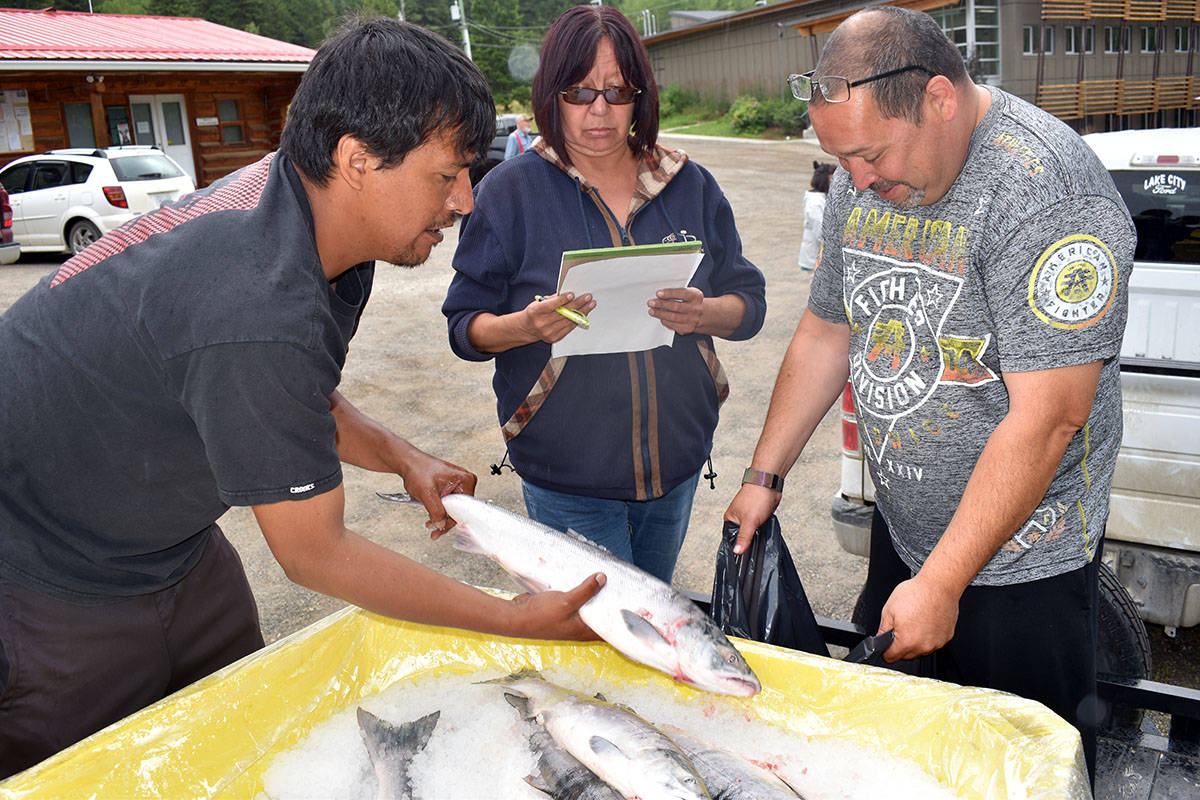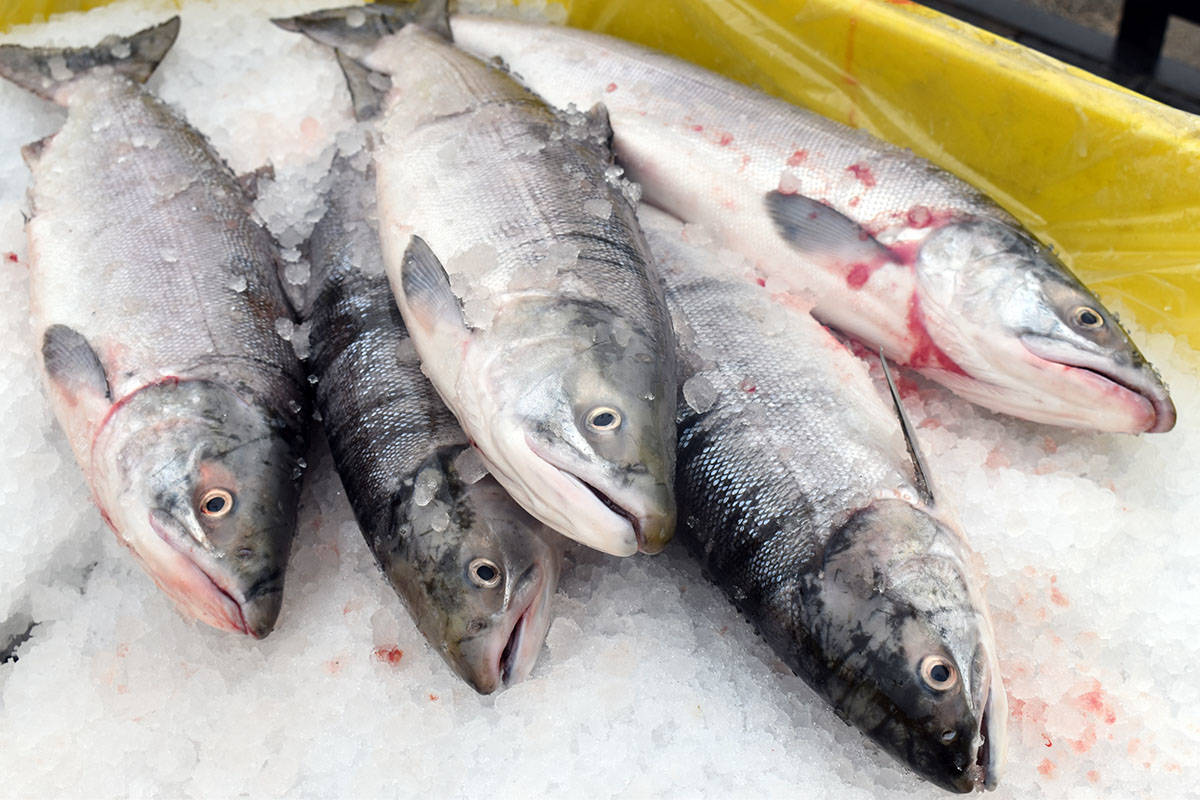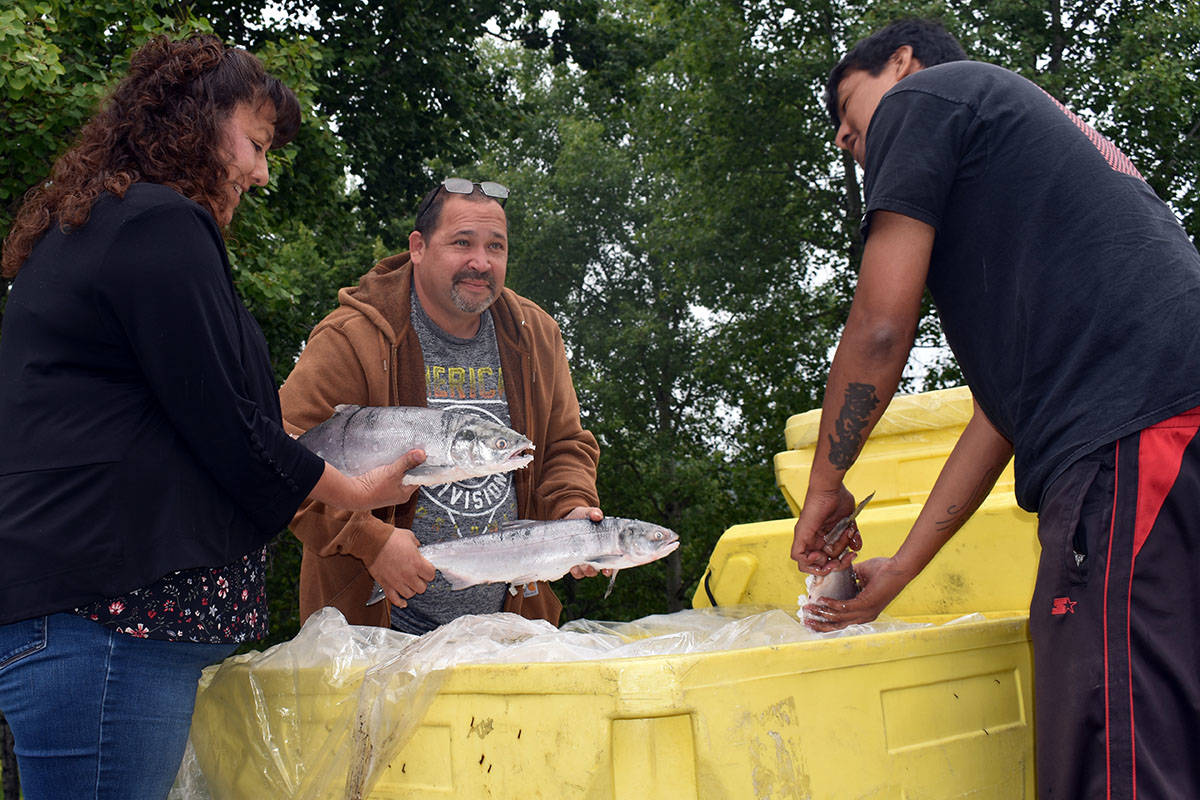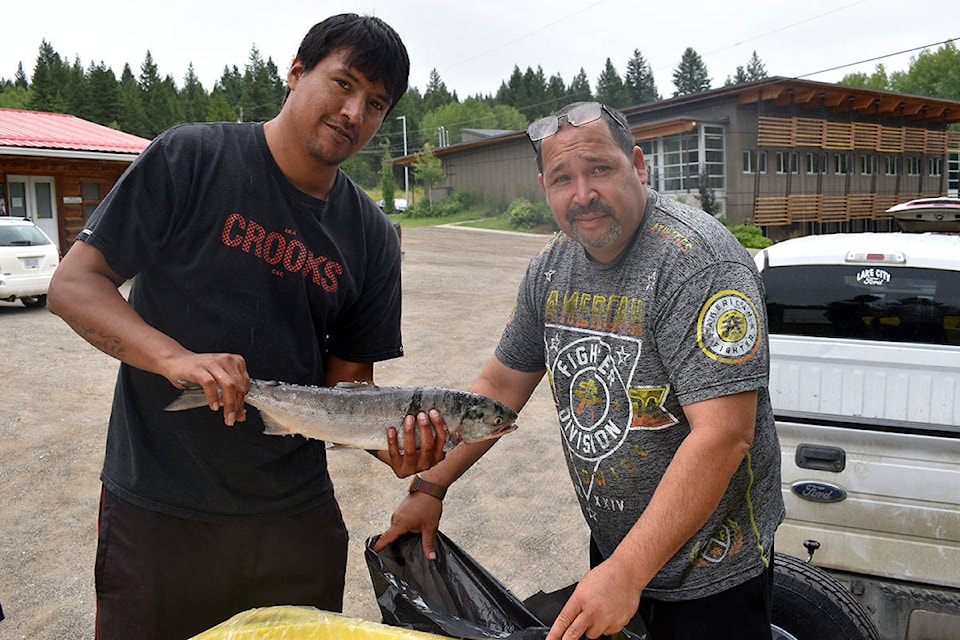Salmon from the Skeena River were a welcomed sight by four First Nations in B.C’s central Interior where they were distributed to on and off-reserve members.
The 2,000 fish were divided Friday, Aug. 14 between the communities of Xat’sull Cmetem (Soda Creek/Deep Creek), Stswecem’c Xgat’tem (Canoe Creek/Dog Creek), T’exelc (Williams Lake) and Tsq’escen’ (Canim Lake).
“It’s great when we can give fish out,” said Northern Shuswap Tribal Council (NSTC) fisheries resource manager, Dave Feil.
Read More: Salmon arrive in larger numbers at Big Bar landslide
Salmon fishing has been closed for the last three years by the NSTC due to a number of factors adversely impacting Fraser River fish populations including wildfires, rain events and the Big Bar slide.
“Our numbers are really low,” said Xat’sull First Nation Chief Sheri Sellars as members gathered late Friday morning outside the community’s natural resource office to receive fish.
“It’s lower than we anticipated for salmon so it was a choice that the chiefs came across and did so, but for all of us we also need that salmon for our people.”
Making the 9-hour drive from Kitwanga to T’exelc on Thursday, Aug. 13, Fiel helped add more ice to the totes of fish packed in a slurry of water, sugar and salt where they can be safely kept for up to 10 days.
“The run up there is a lot better than our Fraser River run. It only took us two days to get 2,000 fish, so that was pretty impressive” he said, noting over three days they were only able to get 825 fish for the communities back in 2017.
Had the four Northern Secwepemc te Qelmucw (NStQ) chiefs not chosen to purchase the fish Sellars believes members would not be getting much if any fish this year.
Fiel pointed to the latest forecast for this year’s Fraser Sockeye run which predicts a historic low of around 283,000 fish.
The Northern Shuswap Tribal Council was planning to open its fishery for one week beginning Sunday, Aug. 16 with a limit of one Chinook per fisherman. Fiel confirmed on Monday, Aug. 17 those intentions, however, were put on hold and that the full closure remains in effect.
Both Fiel and Sellars agree the Big Bar slide is only one factor impacting fish populations that have been slowly depleting over the years, and that more needs to be done when it comes to overfishing.
Read More: Tsilhqot’in Nation demands meeting with feds on declining Fraser River chinook stocks
“I know the Department of Fisheries and Oceans is trying to lessen that but I just wish we had more of a say in regards to how things are managed,” Sellars said.
”We have a minimal amount of say in that. It’s always a struggle for all of our First Nations to get in there and do what we need to do to conserve the salmon.”
Do you have a comment about this story? email:
rebecca.dyok@wltribune.com
Like us on Facebook and follow us on Twitter.



